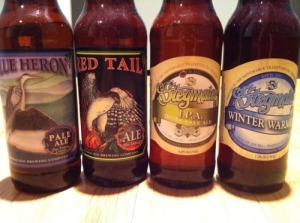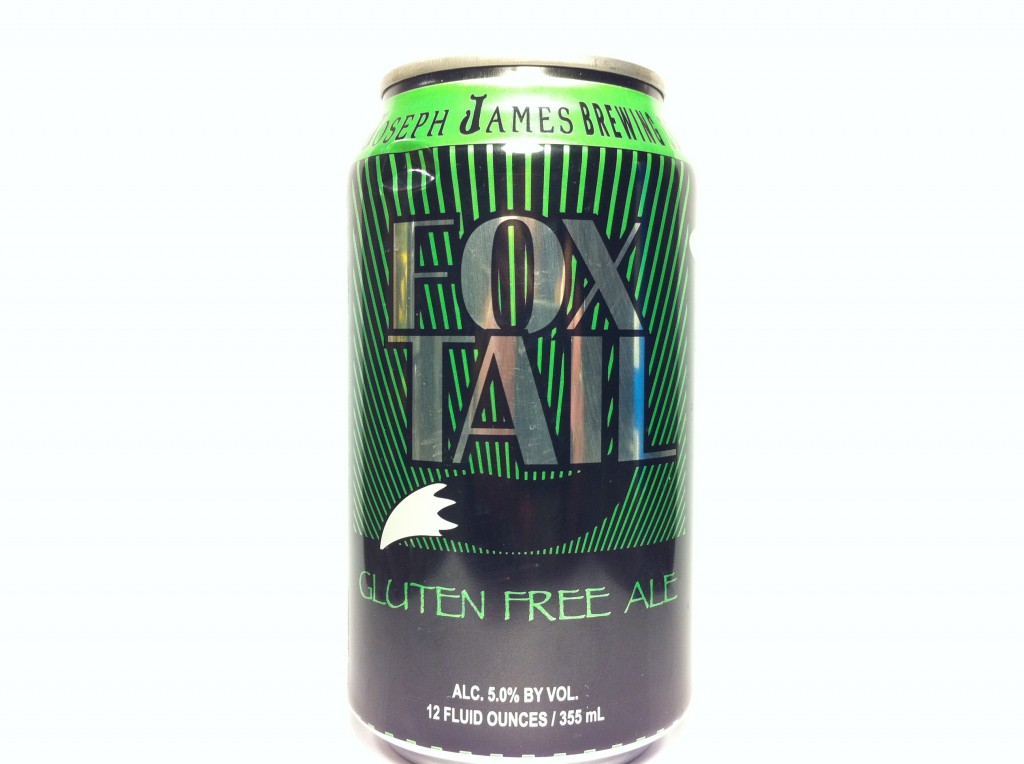
Local Las Vegas brewery, Joseph James, has not only a gluten-free beer, but the first gluten free beer to be canned!
Also notable, this is one of the few gluten free beers that doesn’t use sorghum, the typical barley replacement. Instead, Joseph James says it uses “organic rices and nectars.” The taste of this pale ale is very light, dry, and crisp. This light flavor profile, along with the low alcohol content, hides the fact that there is no barley in this beer. The American hops give Fox Tail a light grapefruit citrus taste.

The beer paired well with the sausage, mushroom, onion pizza I was eating. The lightness in the beer allowed the vegetables on the pizza to still be present with each bite. This is an ideal beer for any sort of meal involving primarily vegetables with little seasoning.
Since Joseph James is a local brewery, you can find their beers at nearly every beer retailer in town.
UPDATE: Joseph James commented on Twitter regarding how to find the new recipes:
Red Fox 4-packs, Lager cans, Gluten Free (Fox Tail) cans, and Weize Guy bottles that do not have the word ‘light,’ are new. As for Tahoe and Hop Box, look for Tahoe 22oz and Hop Box 4-pack bottles. In about a month all beer in the market should be the new recipes regardless of package. These recipes have been evolving over a year so there are newer versions on the shelf.

This past Wednesday, Joseph James re-launched their brand at Khoury’s Fine Wine.
Earlier this year, the brewery hired Alex Graham as the new head brewer. They then began the process of seeking honest feedback about their beers and rewriting all the recipes to match what they wanted to represent their brand. From what I understand, every recipe of theirs was changed. Some beers were completely rewritten from scratch, others were slightly modified.
At Khoury’s, the brewery staff was on hand giving free samples of all of their beers. I didn’t try all of them, but here’s a recap of what I did try:
Tahoe Blue Pale Ale: I had never tried this beer before, so I can’t compare it to the old recipe. I can say though that this is a very solid pale ale. Very crisp, bright and refreshing. On the hoppier side for a pale ale, so it’s got a nice bitterness up front before the dry, citrusy finish.
Hop Box Imperial IPA: Previously, I always had mixed results with this beer. I’ve always thought it was a decent beer, but it was never bitter enough, or had enough hop aroma. The new recipe takes care of all of that. Very strong upfront bitterness with a wave of grapefruit aroma. Less sweet malts are used to keep the focus on the hops. Overall, this is a great IPA.
Red Fox Imperial Stout: The old version was a good stout, but had a bit of thin mouthfeel. This new version feels like a stout should. It has a dark roasted espresso taste and it’s also a bit smokier too, with an almost ashy, vanilla finish.
Joseph James is also experimenting with new beers as well. The first 48 customers at Khoury’s had received one of Joseph James’ “rough draft” beers. I was able to snag a bottle of Toasted Coconut Pumpkin Porter. The other rough draft beer available was S’mores Porter.
I picked up all of their beers so I’ll get to try the rest that I didn’t try that night and write about them here.
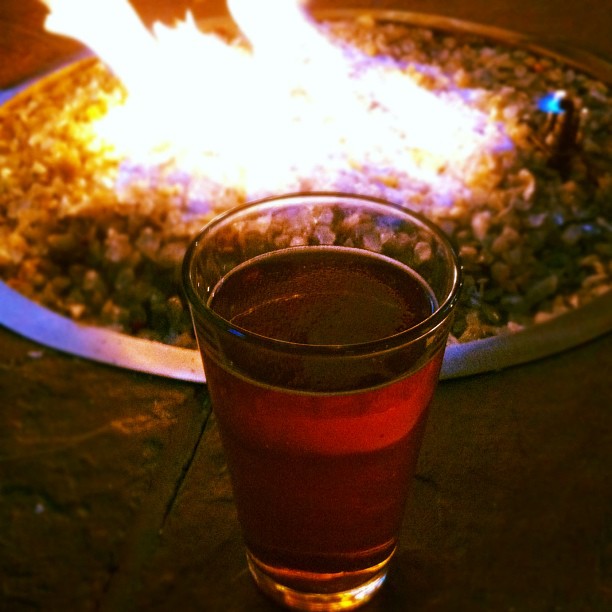
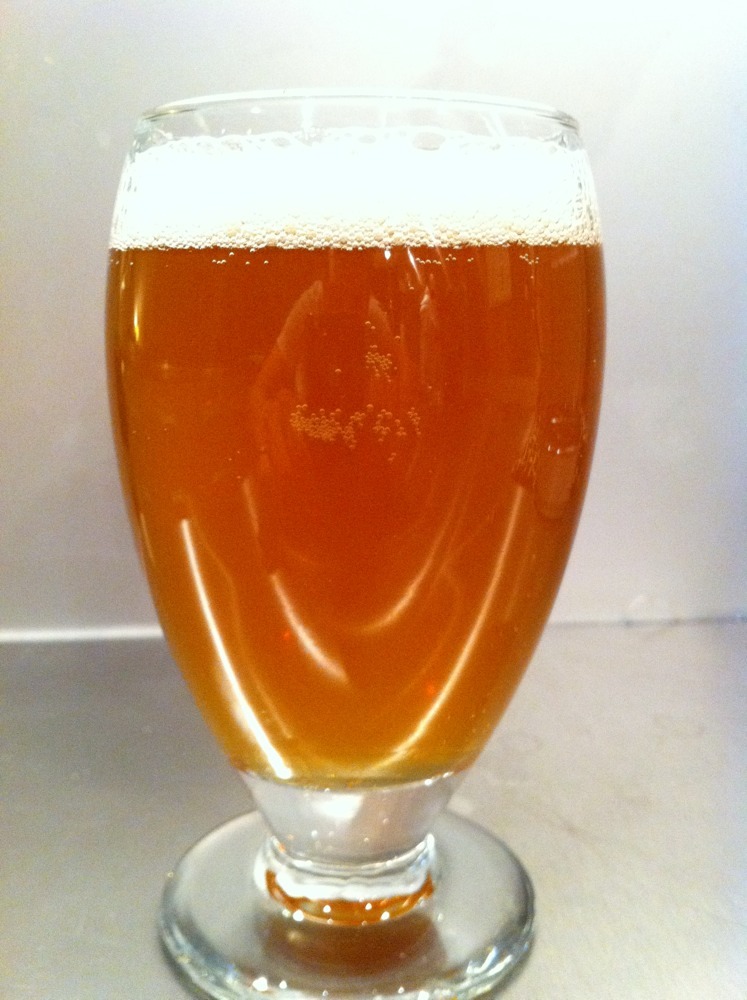
First, some history
The original: I brewed a pale ale for my first beer. I wanted to try and make a beer as simple as possible but with as much flavor as possible. Pale malt, centennial hops. Thats it. The result was good, however very one dimensional.
The new: I wanted the beer to have a more complex flavor, while still keeping the ingredients simple. First, I added honey. Not too much honey, not enough to taste it but enough to add to the flavor. Second, I rearranged the hop additions. The measured bitterness between the two was the same (~40 IBUs) however more was shifted earlier in the boil, giving the beer additional bitterness. Also, I added over 5 times as much hops after the boil, adding hop flavor (not bitterness) and aroma.
The result: The flavor has completely changed. Rather than a plain bready body and yeasty aroma, there is a rich citrusy smell and a sweet complex flavor. The bitterness still falls within the pale ale range, nowhere near the range of my IPA, but acceptable.
I bottles this last week. Really, I should be waiting 2-3 weeks to drink it but I couldn’t wait. The result was carbonation that dissolved away too quickly. The next 2 weeks will condition the beer to hold onto the carbonation better.
I’m very excited for this beer.
It has been over a month since I last wrote on here. Despite originally planning on using this as a means to talk about my homebrews, I have failed thus far. So, let’s make up for lost time.
I have brewed 6 different beers in the past month. Through this, I have changed my workflow when brewing and I have decreased the amount of time and effort it takes to brew. After each beer, I decide that I am exhausted and need to take a break for a couple of weeks. That never lasts, I get the itch to brew again a few days later. Below are the beers I have made:
Pale Ale: This was the first beer I made. I wrote this recipe entirely from scratch and intentionally wrote the recipe to be as basic as possible for the sake of keeping it simple. Pale malted barley and centennial hops. Once the beer was brewed and ready to go into the fermenter, I measured the gravity (density of sugar) and it was spot on to my calculations. Awesome! One week later, after all the visual signs of fermentation disappeared, I checked the gravity and found that it didn’t drop as much as it was supposed to. Meaning instead of my beer having 5% alcohol, it was only at 3%. I later learned that the most likely reason this happened was due to my inability to keep a consistent temperature during fermentation. Yeast is very temperature dependent and different yeast strains ferment at different temperatures. When the yeast notice a rise in temperature, they work harder. When the yeast notice a decrease in temperature, they go into hibernation. The yeast I was using was meant to ferment at 70º F. Not the easiest thing to do in Las Vegas during the summer. With this beer, I learned how to maintain that temperature.
I continued the process to finish this beer anyways. Despite it not being perfect, I wanted to see what it would taste like finished. I dry hopped the beer and let it sit for another week and then I bottled it and let it condition and carbonate in the bottle for two weeks.
A few days ago I cracked one of the bottles open to taste it. To my surprise, it was great. Despite the failed fermentation, it tasted like a normal beer. It didn’t have the watery taste that art artificial beers have (Bud/Miller/Coors) and it didn’t seem sweet from the residual sugars. It had a very dry, crisp finish and was very refreshing. The aftertaste was however a bit bland compared to the initial taste. I had intentionally used few ingredients so I could have a blank slate. Sure enough, this gave the aftertaste an expected simple taste to it, but I was suprised that it wasn’t more present.
Black IPA: I initially was planning on brewing regular IPA next, but I was too excited for this beer that I couldn’t wait and decided to brew this one next. Building upon my pale ale recipe, I added two more malts: crystal malt to give it another element of sweetness, and carafa malt to make the beer black in color with a slight roastiness. I still used only one variety of hop, but this time I used cascade hops.
I had brewed only two gallons of the pale ale. This beer, and all the other beers that I made, I brewed three gallons. That means more grains. Not to mention the fact that this was going to have a higher alcohol content than the pale ale so even more grains were used. Long story short, I mashed the grains with too much water and spilled some. While mashing I also had a hard time keeping a consistent temperature. When mashing you typically keep the water between the mid 140ºs to high 150ºs. Any lower and the sugar conversion doesn’t take place. Any higher and you stop the conversion process. Long story short, I measured the gravity before the boil and I was way off. Not wanting to have another weak beer, I made a few changes to the recipe and added some turbinado sugar to bring the sugar content up. After the beer finished the first stage of fermentation I tested the gravity, and it was right at it needed to be, bringing the beer to 6.8% alcohol content!
This beer is still carbonating so I haven’t had a chance to taste the finished product yet. But the taste I took a taste when I was bottling it makes me very excited to drink this! It has a very hoppy aroma but isn’t too bitter. Cascade hops aren’t really known for their bitterness. The addition of the crystal and carafa malts give the beer a nice malty body.
IPA: The original plan was that this beer and the black IPA would be the exact same beer except with the black IPA getting the carafa malts to make it black. My intention was to make very similar beers with only one different ingredient to taste the difference that it makes. This was originally going to be brewed second. It would be the same recipe as the pale ale, but with more hops and an additional malt. The black IPA would then be the exact beer as this, but with the carafa malt. Because I brewed the black IPA before this one, and had the mishaps that I did, I brewed this one a bit differently. I was very cautious and scared that my sugar levels would be low again. Despite not spilling or boiling over the wort, I was still worried. I decided to add less water before the boil than I did before. This would make the sugar level a little bit more concentrated. I finished brewing, took a gravity measurement and was shocked. I wasn’t too low on sugar at all. It was crazy high, and I didn’t even add sugar like I did to the black IPA! The result was that this beer finished with an alcohol content of 8.5%.
This beer is also still carbonating and should be ready to drink about the same time as the black IPA (I brewed them 2 days apart). This beer tastes very different from the black IPA, despite the original plan of them being very similar. They have the same amounts of hops in them, but since this has a higher alcohol level, the residual sugars mask some of the bitterness and leave mostly just hop aroma. The added alcohol also give it a slightly thicker body, making this a very smooth beer with a very balanced hop level and a high alcohol content.
Brown Ale/Porter: I’m grouping these together because they were brewed one day apart and have a combined story. I kinda used recipes for these. I used the ingredients that the recipes called for but I changed the amounts used to match the alcohol and bitterness levels that I was looking for. I also changed the recipe for the brown ale because I wanted to try adding some dried maple syrup. Basically, it’s maple syrup that was boiled down to a solid and broken up into small chunks. This sounded like it would be awesome with the brown ale.
The first 3 beers I used a California strain of yeast. These two beers used two different British yeast strains. Both of the yeast strains wanted to ferment at 65º. I kept the first three beers at 70º, so I figured that this wouldn’t be too hard. Wrong. Keeping these at 65º in the summer was a bad idea. First, I mentioned earlier that if the temperature is higher, then the yeast work faster. This sounds like a good thing except for the fact that when the yeast work faster, they put out some off flavors. Specifically, it makes the beers smell and taste like alcohol. The brown ale fermented to the right level that it should have, 6.4%, however it tastes like it is in the range of 8-10% but without the sweetness/body to balance it. I still thought it tasted good, just not what I was planning for.
The porter on the other hand, suffered due to my attempts to control the temperature. The wild temperature swings caused a stuck fermentation for the porter. Unlike the pale ale, this time I tried to fix it. I added the California yeast I had used before and raised the temperature to 70º. Unfortunately, that didn’t work. The porter stopped at 4.3% rather than 6.3% alcohol. In addition to that, it has the strong alcohol taste that the brown ale has.
Both these beers will be bottled in the next week or two and will be done conditioning about 3 weeks after that. It will be interesting to see how they turn out.
6: I’m not sure what style to call this. I’ve been calling it 6 since it’s the sixth beer I’ve brewed. After the temperature issues I’ve had, I started to be intrigued by the saison style of beer. Saisons were brewed by farmers in Belgium and left to ferment in barns during the summer. The result is a yeast strain that ferments up to 90º! Living in Las Vegas, I was excited to try this yeast. I wrote the recipe from scratch by first writing a recipe for a saison the same way I did with the brown ale and porter, by copying ingredients and adjusting the amounts for a saison recipe. I then re-wrote it substituting the grains in the recipe with the leftover grains I had from the first 5 beers. Since I am very fond of black beers, I threw in the rest of the carafa I used from the black IPA. I chose hops based off of what I had leftover as well. Saisons are not typically hoppy beers but I decided to try making this one moderately hoppy, about the level of a pale ale. I used the hops I had that were not over the top to try and keep them from being overpowering. I went to the local homebrew shop to buy the yeast but they didn’t have the specific yeast I wanted. I instead grabbed a different Belgian yeast that will ferment up to 78º. I typically keep my house between 70º-75º so I decided it should be fine.
Saisons are typically light in color and light in hops. They have a very crisp, dry finish and are a little peppery from the Belgian hops that are typically used. Mine is a hoppy, black saison. I figured this will either be awesome or terrible.
I just brewed this beer last friday so it is still fermenting and I haven’t taken a gravity reading or taste since I put it in the fermenter. That one taste was pretty good though! The taste will change quite a bit as the sugars are converted into alcohol and the hops balance out, but so far it is at a good starting point!
There you have it. Six beers in four weeks. I am going to wait to brew again until I bottle the brown ale and the porter. I haven’t decided what I’ll brew next. I am going to keep away from making traditional British beers for now until the temperature drops outside. I am planning on ordering the specific Belgian yeast I’m looking for online and will brew several beers with it. For sure a traditional saison and an IPA using the yeast. Knowing me, I’ll probably make it a black IPA. Whatever I brew next, I’ll be sure to actually start writing about it and posting the pictures I take!
If you are interested, or even just mildly curious, about how to brew beer at home, you need to read this book. This book excels over many other revered texts on home brewing simply for how straight forward and beautifully presented the informations is.
Brewing beer is not easy but it isn’t difficult either. It is an involved process with a lot of independent variables that the brewer is in control of. Because of this, every other book on brewing is typically a lengthy read. Beer Craft, on the other hand, is neither too wordy or too simple. It can easily be read in one sitting. Despite this, Beer Craft is just as informational as other books on home brewing. It is very clear what steps need to be followed exactly, and what steps you have the freedom to explore on your own. In addition to this, there are plenty of charts breaking down different ingredients and how they can be used. Brewing beer is a science. The ratios of the ingredients used and even the different temperatures used can alter the end product. Beer Craft does an excellent job of teaching the science without being too overwhelming.
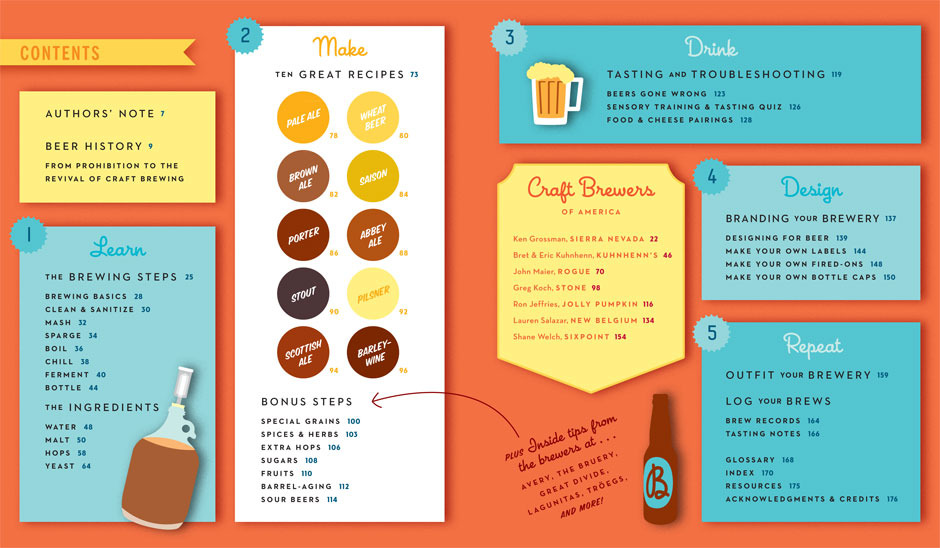
Most books will recommend beginners start by using malt extract to brew beer. Beer Craft doesn’t even suggest this as an option, giving only all grain brewing methods. Where others will caution against the involvement required to brew all grain, Beer Craft provides the reader with one gallon recipes that can be brewed on a standard kitchen stovetop with supplies that do not require a hefty financial expense. This allows beginners to brew beer like the pros do, right from the get go.

Lastly, few books properly instruct beginners how to begin formulating their own recipes. Descriptions of beer styles is usually done by describing the final product, not the ingredients used to create it. Within Beer Craft are various charts showing what malts are used, and to what percent of the total grain bill, for each style of beer. Within each recipe Beer Craft gives, there are suggestions on what to change or add to the recipe. For example, Beer Craft provides a recipe for a pale ale. It then gives substitution suggestions to change it into an IPA, imperial IPA or even a black IPA. In addition to the recipe suggestions, one of the most useful chapters is one on adding specialty ingredients. Not only does it suggest different fruits or spices to add, but how much should be added and at what point in the process it should be added. Taken together, you learn what ingredients make up 10 different styles of beer, and suggestions on what to change in order to create other styles, or what to add to create something entirely new. If you want to brew an IPA with oranges, you can create a recipe simply by using the pale ale recipe, following the guidance on how to make it an IPA, then following the suggestions for adding citrus fruits. No other book I’ve read has shown me how to do this so easily.
I’ve learned more about beer reading this book than I have from reading anything else. This was also the shortest of all the beer books I’ve read and the best looking!
For more information, and more photos of the pages, go to the Beer Craft Book website
Last night at the bar it was mentioned that many people don’t realize how many different types of beer there are. I thought I’d give a brief overview:
To simplify things, there are primarily two different types of beer: Ales and Lagers. At the most basic level, the difference between the two is the type of yeast used to ferment the beer. Lager yeast ferments at colder temperatures and ale yeast ferments at higher temperatures. Lagers and ales break down even further into different types of beers.
Lager:
This is the most prominent type of beer simply because this is the kind of beer that Budweiser, Miller and Coors are. Other common lagers are the popular Mexican beers: Corona, Dos Equis, Pacifico etc. These beers are best served at ice cold temperature and as such have a lighter more “refreshing” taste. Or as I think of it, kind of watered down taste. The predominant lager beers are American lagers and pilsners. Again simply because this is what the big 3 companies make. The good lagers are the kind that Germany makes: marzen, bock and dunkel. These beers are typically darker colored and have a much more complex taste than the common American lager. However these beers are still lighter in flavor and feel than most ales and don’t have a predominant hop taste.
Ales:
These are the more complex beers with a wider range of style. These range from the wheaty Hefeweizen and white beers (like Pyramid Hefeweizen or Blue Moon) to the dark stouts (like Guinness). Pale ales and India pale ales sit in the middle of the spectrum. IPAs and pale ales are recognized by their hoppy bite. Ales are the predominant type of beer everywhere except North America. I couldn’t begin to try and explain every type of ale because there is just so many kinds!
Ales are by far, my favorite kind of beer just because there are so many different kinds. The few beers that ive blogged about here have all been ales. I’ll try to continue to review different beers and use that opportunity to describe the beer type and it’s common characteristics.
Another brief review:
It’s decent. Very straight forward and simple taste. Reminds me a lot of Newcastle Brown Ale. But here’s the problem: the brewery calls it a pale ale. If that’s the mark Mendocino was looking for, then they completely missed it. This beer has a very mild hop flavor, as opposed to the hoppy bite that pale ales should have. Like I said, it’s a good beer, but between this and Blue Heron, there’s not enough hops in their beers to be personally satisfying.
Type: Pale Ale
ALC/VOL: 6.1%
Color: Golden yellow, slight orange tint
Smell: Smells citrusy, orange/lemon type of citrus. Little bit of a wheat tone as well.
Feel: smooth, medium carbonation
Taste: Little bit of an apple juice taste, some honey overtones. Other than that, there’s not much. In my mind, Sierra Nevada makes the standard pale ale. In comparison to that, this beer lacks in hoppy bite and doesn’t have much of a flavor. It’s very simple, seems like it’s related to the big 3 American beers. This definately has more taste and hops than those beers, but it’s still a very simple taste.
Overall: Meh. I’m not exactly sure what to say. It’s not bad, not great though. Since receiving these beers, I’ve noticed that the Ho Foods (Whole Foods) near me sells beers from this brewery but compared to the rest of their selection, I can’t say that this would be on the top of my list.
For Christmas, the wife and I received a beer of the month subscription from our BFF, Emily.
We received our first shipment this week. 12 beers, 4 different types from 2 different breweries. The club is meant to introduce people to beer from small breweries in the country that only distribute locally. Not surprisingly, I’ve never heard of either brewery I received this month.
Mendocino Brewery is based in California and has been brewing beer since the 80’s. The extent of their success is mostly winning a few awards at California state fairs.
Second, Stegmaier Brewery is based in Pennsylvania. This company was founded in the mid 1800s by a German immigrant. Needless to say, I’m a bit more excited to try this brewer’s beer.
I’ve never written a beer review before. I’m going to start by trying to review all of the beers I receive from my 3 month subscription. This should be interesting…











